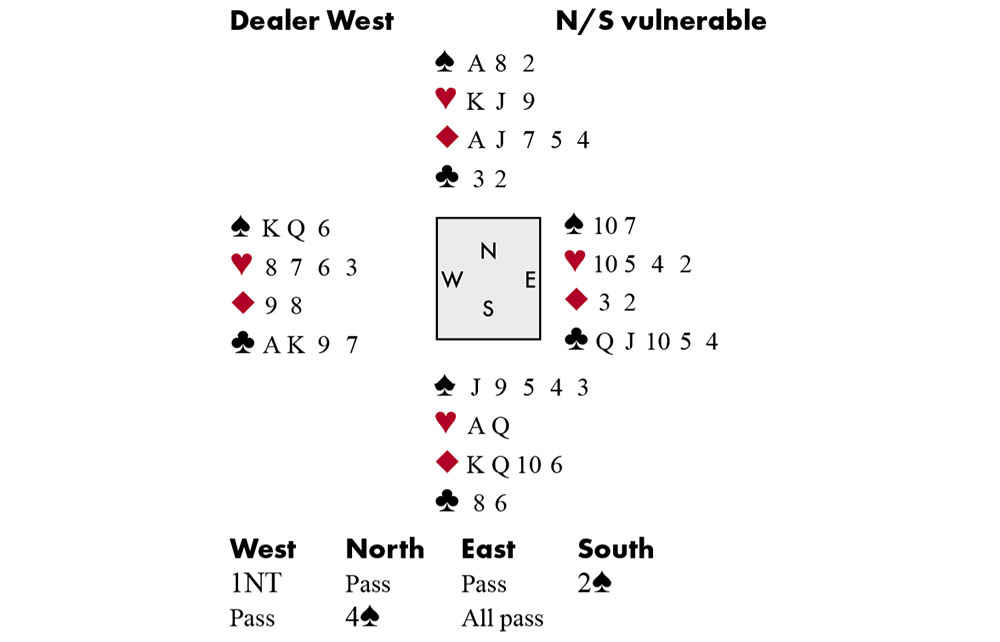I’ve been waiting for what feels like decades to make a contract by means of an intra-finesse. And not just because I love the name. When I first read about the manoeuvre, my mind was blown away in the same way it was when I first encountered squeeze-plays: ‘impossible’ games could be made!
The trouble with intra-finesses is that they are nearly as rare as nightingales. Indeed, they were virtually unknown to anyone apart from experts until about 50 years ago, when the great Brazilian Gabriel Chagas – a three-time world champion – contributed to a book in which top players gave their favourite bridge tips. He was the first to explain the technique, bringing it to a wider audience (some say he also gave it its name).
Basically, the intra-finesse is employed when you are missing three honour cards, divided between both defenders. Declarer finesses each defender in turn; the second-round always involves a ‘smother’ or ‘pinning’ play. Which is, of course, impossible to understand without seeing it in practice. Finally, though, I can show you – not because I managed to execute one myself, but because my brilliant partner Ollie Burgess did during a recent duplicate (see diagram).
West opened a weak no trump. Ollie’s 2♠ showed spades plus a minor, and I jumped to game. West kicked off with the ◆A and ◆K, and then switched to a heart. How to avoid losing two spade tricks? It was obvious from West’s opening bid that he held the ♠KQ. So unless they were doubleton, Ollie had to hope that East held the ♠10x – the perfect opportunity for an intra-finesse! He won the heart in dummy and played a low spade to the ♠9.








Comments
Join the debate for just £1 a month
Be part of the conversation with other Spectator readers by getting your first three months for £3.
UNLOCK ACCESS Just £1 a monthAlready a subscriber? Log in